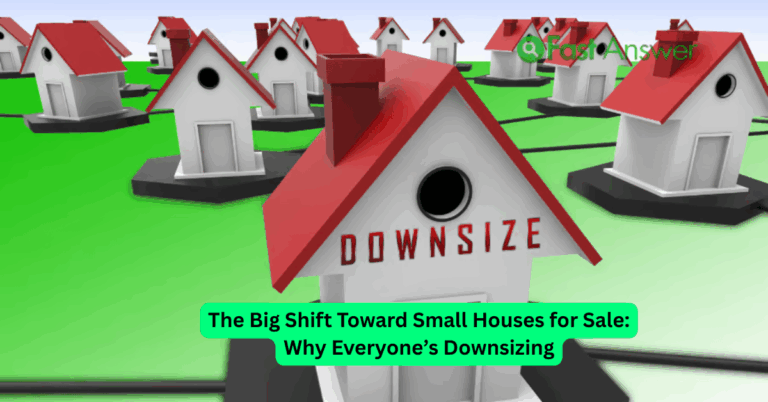Best Neighborhoods To Buy A Home In 2025
In 2025, homebuyers face a landscape where the definition of an ideal neighborhood may surprise you. New data shows that urban areas like Austin, Texas, boast a projected growth rate exceeding 25% over the next two years. This promising trend, coupled with an infusion of tech startups and cultural vibrancy, positions them as prime real estate hotspots.
A closer look at prospective neighborhoods reveals a fine balance between established charm and modern convenience. For instance, neighborhoods with rich histories, such as Brooklyn’s Brownstone-lined streets, now promise up-to-date amenities and sustainable living options. Surprisingly, census data indicates a rise in millennial homeowners in these areas, drawn by green spaces and smart-home technology integration.
- Austin, TX: Known for tech growth and cultural appeal.
- Seattle, WA: Offers robust job market and vibrant arts scene.
- Denver, CO: Boasts outdoor activities and booming economy.
- Nashville, TN: Attracts with thriving music industry and lower costs.
- Raleigh-Durham, NC: Ideal for research and innovation hubs.

Best neighborhoods to buy a home in 2025
Finding the best neighborhoods to buy a home in 2025 requires looking at trends and potential. Urban areas are becoming popular because they mix city life with modern perks. Young buyers are drawn to cities like Austin and Seattle, known for job opportunities and vibrant cultures. These places often have exciting entertainment options, too. It’s no wonder these areas are gaining attention from future homeowners.
Outside the city bustle, suburban retreats offer a mix of convenience and space. Families appreciate the quiet streets and schools nearby. Many suburbs now include shopping centers and parks, providing a sense of community. These features attract those looking for a balanced life. Suburban areas are still affordable compared to urban environments.
Coastal gems are another attractive option for 2025 buyers. Homes near the water offer scenic views and a relaxed lifestyle. Areas like Miami and San Diego are becoming more popular. They promise a sunny escape and various outdoor activities. Coastal neighborhoods are perfect for those who enjoy nature and beachside living.
Interest in green and sustainable living is rising as well. Eco-friendly neighborhoods focus on renewable energy and community gardens. These areas attract environmentally conscious buyers. Many neighborhoods are making efforts to become sustainable. This trend is likely to continue growing as more people choose to live sustainably.
Urban Enclaves: Where City Living Meets Future Growth
Urban enclaves represent a blend of city living with promising growth opportunities. Cities like Denver and Portland show exciting potential for real estate in the coming years. These urban areas offer vibrant lifestyles filled with diverse cultures, excellent dining, and abundant entertainment. High-quality public transport makes these neighborhoods desirable for those who value convenience. Young professionals and families alike are taking interest in these dynamic environments.
Living in urban enclaves also means access to top-rated schools and world-class healthcare facilities. Proximity to universities and research centers makes these areas attractive for students and academics. For example, Boston’s urban neighborhoods are expanding due to the influence of its prestigious educational institutions. The combination of intellectual hubs and economic opportunities makes these areas perfect for growth. As universities innovate, real estate in these areas continues to flourish.
Another benefit of living in urban enclaves is the plethora of job opportunities. Cities focused on technology and finance, such as San Francisco and New York, lead the nation in job creation. This attracts talent from all over the world, enriching the community and local culture. As companies establish their headquarters in these cities, housing demand follows. This ensures steady economic development and community growth.
Urban enclaves are also known for their commitment to sustainability. Many cities are implementing green initiatives, like energy-efficient buildings and extensive public parks. This focus on environmental health appeals to modern homebuyers. Urban areas with walking trails, bike lanes, and green spaces become more attractive. Sustainable living in a bustling city environment is a win-win for future residents.
Suburban Retreats: Convenience and Community in Outer Districts
Suburban retreats offer the best of both worlds. These areas combine the peace of rural settings with the amenities of urban living. Families find this appealing since there are spacious homes with yards. With well-maintained parks and local events, these communities foster a special neighborhood spirit. It’s not uncommon for people to form lifelong friendships in these friendly suburbs.
Convenience is a significant advantage of suburban living. Many suburbs have shopping centers and restaurants within a short drive. This makes running errands or enjoying a night out easy and enjoyable. Additionally, public transportation options are often available, connecting residents to nearby cities with ease. This accessibility adds an element of excitement to suburban life.
Education is another highlight of suburban retreats. Many suburbs boast excellent schools known for high academic achievements. Parents feel comfortable as their children attend top-rated institutions close to home. Suburbs often have community libraries and learning centers, enhancing educational opportunities. Learning becomes a community effort, benefiting everyone.
Safety and tranquility are significant draws for those considering a move to suburbia. Crime rates are generally lower, making suburbs appealing for families. The quiet streets provide a calming escape from city noise. Community programs and events further engage residents, enhancing neighborhood security. Suburbs offer a haven where people can thrive and establish roots.
Coastal Gems: Niche Locales with Unmatched Potential
Coastal gems are hidden treasures that offer stunning views and unique lifestyles. These niche locales are often nestled along picturesque coastlines, providing easy access to beaches and marine activities. Residents enjoy a slower pace of life, where mornings might start with a walk by the ocean. The soothing sound of waves and fresh sea breeze make these areas perfect for relaxation. It’s a calming environment perfect for those seeking a peaceful retreat.
Despite their tranquil settings, coastal communities offer rich and vibrant cultures. Local seafood festivals highlight the fresh catches from the ocean. Small boutique shops line the streets, offering handmade crafts and local art. These events and shops bring people together, creating a tight-knit community atmosphere. Coastal towns often host events that draw visitors from afar, boosting the local economy.
Living in a coastal gem means access to fantastic outdoor activities. Surfing, kayaking, and fishing are popular pastimes among residents. Many towns also boast nature trails and parks for hiking and picnicking. This lifestyle attracts individuals who appreciate adventure and outdoor fun. It’s easy to stay active and connected to nature in these beautiful places.
Real estate in coastal areas is also gaining attention due to its investment potential. Property values in these locations are steadily rising as more people discover their appeal. Coastal homes range from charming cottages to luxurious beachfront properties. Investors see the value in these communities, betting on their continued growth. As word spreads, demand for coastal real estate is likely to increase.
Environmental awareness is also a big part of living by the coast. Residents often engage in conservation efforts to protect their stunning locales. Initiatives include beach cleanups and sustainable living practices. Such communal actions enhance the area’s natural beauty and support healthy ecosystems. Engaging with nature becomes a shared mission for those living in coastal gems.
The Influence of Tech Boom on Residential Markets
The tech boom has significantly reshaped residential markets across the globe. Cities like San Francisco and Austin are prime examples of how technology hubs drive housing demand. Young professionals move to these areas seeking lucrative job opportunities. This influx increases the demand for housing, resulting in rising property prices. The tech industry’s growth has a clear impact on local real estate scenes.
Tech giants setting up offices often lead to rapid urban development. Infrastructure improves, as these companies invest in roads, public transport, and other amenities. This enhances the quality of life in these areas, attracting even more residents. The presence of these tech companies often brings global talent, enriching community diversity. Overall, this transformation benefits both local businesses and housing markets.
Technology’s influence extends beyond creating jobs; it also changes how homes are designed. Smart-home technology is becoming a standard feature in new builds. Buyers now expect their homes to be equipped with devices that can automate daily tasks. This demand shapes the residential market, leading to increased innovation within the construction industry. From energy-efficient appliances to advanced security systems, tech-savvy homes are the future.
The tech boom doesn’t just bring opportunities; it also presents challenges. Housing affordability becomes a pressing issue as prices rise. Many locals find themselves priced out of their neighborhoods. This separation creates a need for affordable housing solutions. Balancing growth with accessibility remains a critical topic for policymakers.
Beyond big cities, the tech impact is noticeable in smaller towns transforming into tech hubs. Remote work has fueled the rise of tech-friendly small towns. Companies offering flexibility allow employees to live further from major cities. This shift increases suburban home demand, creating new real estate trends. The digital landscape continues to reshape where and how people choose to live.
Investing in Green and Sustainable Neighborhoods
Investing in green and sustainable neighborhoods is becoming increasingly popular. These areas focus on eco-friendly living, offering homes built with sustainable materials. Solar panels and energy-efficient appliances are common features in these neighborhoods. This commitment to the environment attracts eco-conscious buyers. As more people value sustainability, these areas are gaining appeal.
Green neighborhoods offer more than just environmentally friendly homes. They provide community gardens that promote local food production. Residents can enjoy fresh produce while reducing their carbon footprint. Parks and green spaces are also a hallmark of these neighborhoods, providing a natural escape from urban life. These features encourage outdoor activities and foster community bonds.
Financial benefits are another reason to consider investing in these areas. Energy-efficient homes often lead to lower utility bills. Over time, these savings can be significant, adding appeal to purchasing green properties. Government incentives and tax breaks may also be available for homeowners. These perks make sustainable living not only the ethical choice but also the economical one.
The rise of green technology supports the growth of sustainable neighborhoods. Innovations like rainwater harvesting systems and electric vehicle charging stations are becoming standard. These technologies reduce environmental impact and improve quality of life. A neighborhood equipped with such features will likely see increased property values. Buyers recognize the long-term benefits of investing in modern sustainability.
Community ethos is strong in many green neighborhoods. Residents often come together for environmental causes, from local clean-ups to awareness events. This focus on sustainability creates a shared vision, strengthening neighborhood ties. It’s a lifestyle that promotes collaboration and responsibly caring for the planet. Investing here is as much about being part of a mindful community as it is a smart financial decision.
Frequently Asked Questions
Choosing a neighborhood in 2025 requires considering amenities, growth potential, and lifestyle. Below are common questions and answers to guide your decision-making process.
1. What factors should I consider when choosing a neighborhood in 2025?
When choosing a neighborhood in 2025, first think about the proximity to work and school. A shorter commute can greatly enhance daily life by saving time and reducing stress. Additionally, access to public transportation is vital as cities reinvest in sustainable and efficient transit solutions. This not only impacts convenience but also affects environmental footprints.
Next, consider the availability of local amenities such as parks, shopping centers, and entertainment venues. These add value to everyday living and provide leisure options. Safety is another critical factor, so researching crime statistics can offer insights into community security. All these factors collectively shape the quality of life within any given neighborhood.
2. How has remote work influenced neighborhood selection?
Remote work has dramatically changed the dynamics of neighborhood selection. More people are free to live farther from city centers, choosing homes that offer better space and serenity. This shift has led to a rise in suburban and rural property purchases where homes are often more spacious and affordable. Quality of life factors, like green spaces and low traffic, become increasingly attractive.
Moreover, the need for home offices has increased the desirability of properties with extra rooms or a separate workspace. Digital connectivity is crucial for remote work, so neighborhoods with strong internet infrastructure are favored. Good broadband ensures smooth remote working experiences, influencing buyers’ decisions significantly.
3. Are there specific amenities to look for in future-ready neighborhoods?
Future-ready neighborhoods often feature advanced amenities such as smart-home integration and eco-friendly designs. These technological advancements contribute to energy efficiency, enhancing the living experience. Such amenities appeal to buyers looking for sustainable and modern living solutions. They also often include solar panels, rainwater harvesting, and high-efficiency appliances.
Beyond technology, accessibility to green spaces and community areas is an important aspect. These spaces promote social interactions and wellbeing among residents. Other amenities like fitness centers, co-working spaces, and cultural hubs cater to diverse lifestyles. These elements represent an ideal blend of urban and suburban living options.
4. How important is the school district in choosing a home location?
For families, the quality of local schools remains a top priority in choosing a neighborhood. Good schools often signal a strong, supportive community, enhancing the value of nearby real estate. Families seek locations where children can access excellent education without long commutes. This factor can drive decisions even more than proximity to work.
Moreover, a reputable school district often attracts like-minded families, creating a supportive environment. This can boost property values over time as more buyers seek homes in such areas. Quality schools are seen as a long-term investment in a child’s education and future, ensuring stable demand for properties in these districts.
5. What role does community culture play in neighborhood selection?
Community culture significantly influences neighborhood preference. A vibrant community offers events, social gatherings, and a welcoming atmosphere, giving residents a strong sense of belonging. For many, having neighbors who share similar interests and values can enhance satisfaction with their living environment. It helps nurture a connected community where people look out for each other.
Neighborhoods with diverse cultures and inclusive environments often provide rich social experiences. These areas encourage interactions and foster friendships across different backgrounds. The community vibe often spreads through local shops, markets, and recreational activities. This sense of belonging and community spirit can greatly enhance the quality of life.
Conclusion
2025 presents a unique landscape for homebuyers, with diverse neighborhood options catering to various lifestyles. Urban enclaves, suburban retreats, coastal gems, and tech-influenced areas each offer distinct advantages. Understanding these aspects can guide buyers in making informed decisions. As real estate trends evolve, remaining adaptable and informed is crucial.
Investing in green and sustainable neighborhoods reflects a growing preference for eco-conscious living. By recognizing the shifts in work patterns and lifestyle priorities, home seekers can find locations that best suit their needs. The fusion of technology, community, and environmental awareness shapes the future of residential markets. Staying attuned to these changes will help ensure smart investments in 2025 and beyond.



